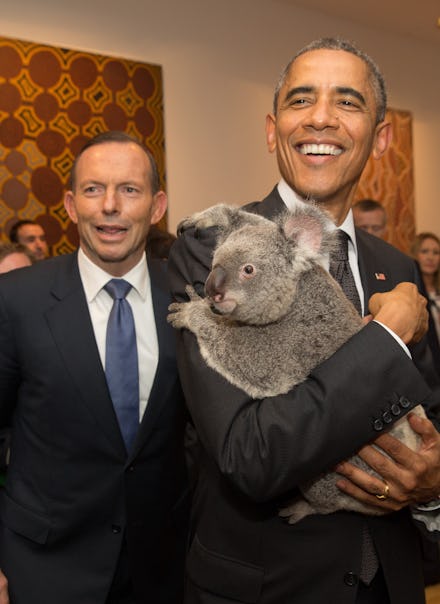Australia's Weird, Amazing Wildlife Faces Mass Extinction

Australia's incredible animals are in serious trouble.
According to a new review published in the Proceedings of the National Academy of Sciences, approximately 11% of Australia's 273 native land mammal species have gone extinct in the past 200 years, and an additional 21% are threatened with extinction today. In comparison, North America lost just one land mammal species after European colonization: the sea mink.
Globally, 1 in 4 mammals are at risk as of 2008, which has conservationists extremely concerned.
"We knew it was bad," lead researcher John Woinarski of Charles Darwin University lamented to the New York Times, "but I think our tallies were much worse than previously thought."
The extinction rate is just one part of the ecological crisis unfolding in Australia. Woinarski told the BBC that "no other country has had such a high rate and number of mammal extinctions over this period, and the number we report for Australia is substantially higher than previous estimates."
The study pegs the rate of species extinction at one to two species per decade. "This extremely high rate of biodiversity loss is likely to continue unless substantial changes are made," Woinarski added.
"The extent of the problem has been largely unappreciated until recently because much of the loss involves small, nocturnal, shy species with [little] public profile," he said. "Few Australians know of these species, let alone have seen them, so their loss has been largely unappreciated by the community."
One key driver of the mass extinctions has the introduction of invasive species. Australia has about 15-23 million feral cats, while other introduced threats like the European red fox and the extremely poisonous cane toad have also taken a serious toll. Humans have contributed to the destruction of wildlife through wildfire mismanagement, habitat loss, livestock, hunting and climate change. The following chart ranks the threat level posed by each factor on a scale of one to eight, with the number of species affected in parentheses:
The researchers were quick to point out that without major advances in wildlife preservation, iconic species like the koala will begin to vanish as well. The study notes that since many of the species being lost (like the platypus, wombat and the banded hare-wallaby) are "phylogenetically distinct," their loss would remove "a disproportionately large component of the genetic complement of the Earth's biodiversity."
Biology enthusiasts will remember the sad story of the thylacine, or Tasmanian tiger, which was last observed in the wild in 1933. The last known thylacine was captured that year and lived in captivity three years before perishing.
It's an environmental disaster: The authors argue that while the Australian public and the global community have been "relatively oblivious of this extinction calamity," public awareness of the threats facing Australia's native wildlife will increase as iconic species begin to disappear in greater numbers.
Unfortunately, by that time it could be too late to save many of the country's animals from extinction.
The upshot is that the team determined that Australia's ecosystem is salvageable, so long as the government takes measures such as migration of endangered animals, public and private conservation systems, improved fire regimes and animal control (the killing of feral cats in particular posting a "formidable challenge"). These programs would have to be "large-scale and sustained long-term," but they are doable.
The bad news is that if the world accepts the loss of Australia's biodiversity with little mourning, says Woinarski, "Many extinctions expected in the future will be seen as inconsequential."